Walking Shiobara. Tochigi Prefecture, Japan. June 2024. Part 1.
"A man can be himself only so long as he is alone, and if he does not love solitude, he will not love freedom, for it is only when he is alone that he is really free". Arthur Schopenhauer.
Part 2 is here.
I learnt a lesson. Visited Nasu-Shiobara area in June last year, liked it a lot, have been nursing this feeling in my head wanting to write a blog, murmuring words for the post while walking there and elsewhere and… forgot. And I did not make detailed notes, just keeping the ball of impressions in my head thinking it will roll out nicely once I start writing. It could be so, but not after 6 months. So, going forward I have decided to either make my notes more elaborate or write my diary/blogs soon enough after the trips. In any case, I can’t leave this hike not recorded, as the place was very much close to my ideal. And when I go back again, I will add more details.
Fact sheet. Nasu-Shiobara is a city in the north of Tochigi prefecture, located in the mountain area and a home to a variety of onsen (hot spring) villages, including Nasu Onsen, Itamuro Onsen (those two are in the mountains) and Shiobara Onsen (in the valley along Hoki River). Population is 116,000 and decreasing. Main industries are agriculture and tourism. Things to do include hiking, climbing Mt. Nasudake (there are three peaks), fruit picking and enjoying hot springs. The temperature in Shiobara in June was on the average 5 degrees lower than in Tokyo. So, the place is now my candidate for a potential summer base. Shiobara Onsen can be reached by bus from Nishi-Nasuno and Nasu-Shiobara stations. It is 3–4-hour trip from Tokyo.
Shiobara onsen (and Atami onsen in Shizuoka Prefecture) became famous in 19th century through the romance novel by Koyo Ozaki Konjiki Yasha (The Golden Demon). Whereas Atami has become a very popular and upscale resort, Shiobara was far from enjoying a steady influx of visitors which is confirmed by a sight of many abandoned hotels in the village. Like this.
Regarding Atami, I have been there once, no plans to visit again, but spending time in Shiobara is totally my cup of tea. Main reason probably is that there are no crowds. I like it quiet. Kind of recharging through a solitude.
Here is my route on the map. Let’s dive in.
From my hotel (I stayed in New Shiobara, 10 min. walk from Myounji temple, many different baths, good but crowded dinner and breakfast buffets) I took a bus to Momijidani Suspension Bridge. Only when I arrived there, I realized that actually I have visited the area before. The search of the pictures in my computer revealed that it was in September 2017. Well, one of the reasons to put your memories on paper in case you don’t want to visit the same place again. But I totally did not mind, especially after reading the book by Tae Moriyama. One chapter is devoted to Nasu-Shiobara area.
Actually, I tried to follow some of the author routes . But unfortunately , many hot springs he described in his book (it was published in 1990) no longer exist. For example, Fudo-no Yu, Iwa-no Yu, etc.
And below is the modern map (not 100% correct, but good enough).
So, back to the hike.
After getting off near Momijidani suspension bridge, I walked across the bridge to the small park.
Then back to the beginning of the trail.
Another suspension bridge, Mikaeribashi, in 15 minutes.
I spent some time on the bridge enjoying the views of Hokigawa (Hoki River).
Then a bit of a climb, but not for long.
After the rest, I descend towards Ryusun Waterfall (Ryusunnotaki). These steps were a killer! My knees did not like them at all.
Very peaceful near the waterfall. I stayed a bit, relaxing mental muscles.
My next destination is Oami Onsen. Here there is a “wild” (unattended) hot spring just right near the river. I remember it from my previous trip in 2017. It is called Notenburo.
Hmmm, the sign says I have to go to the reception of the nearby ryokan Yumori-Tanakaya to get permission to visit. OK.
“Can I visit Notenburo”?
“It is out of operation, we recently do not maintain it and not sure if the temperature is good enough”, says the lady at the reception.
“I see, I visited the place around 7 years ago and really would like to repeat the experience”, I begged.
“Well, you can go and see, but if it is too cold or hot, please do not enter. Going forward we will allow use of Notenburo only for the staying guests”.
“Thank you. Guess, I will stay next time for a couple of nights”, I am happily rushing back to the steps leading down to the river.
The baths are hovering over the river, the birds are singing and rustling through the trees. Now I completely agree with A. Schopenhauer I quoted in the beginning of this post. I feel exhilaratingly free, the head is empty, no distractions, no thoughts…
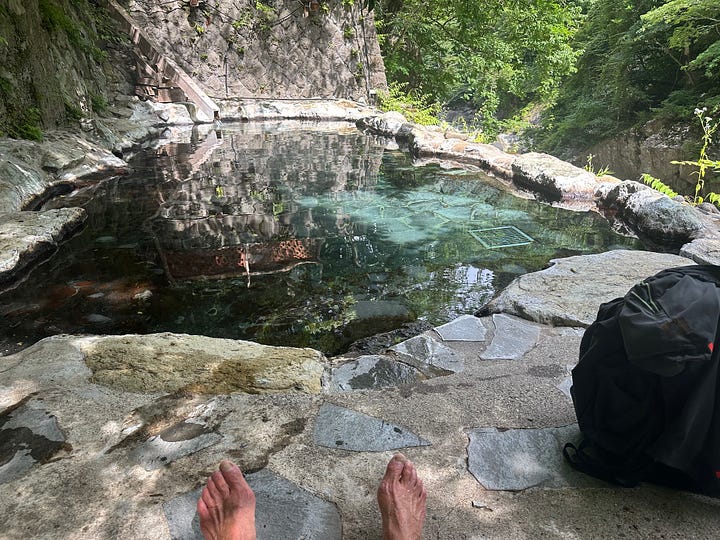
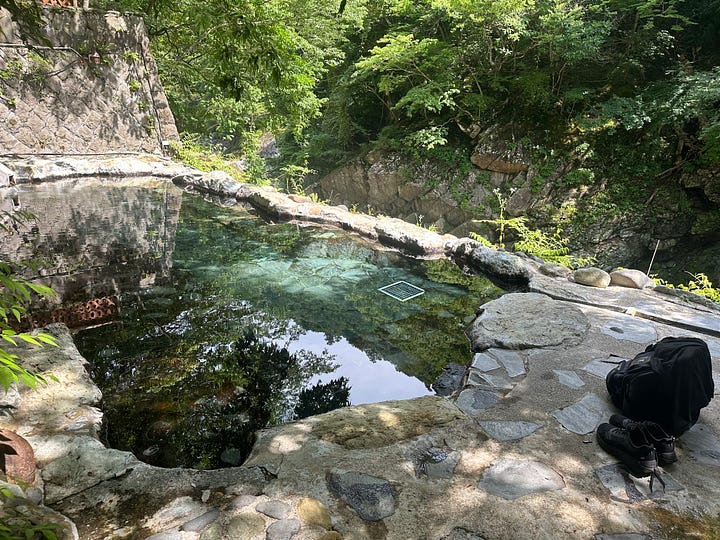
Bathing done I then pass Hokigawa Dam and walk towards Fudo-no Yu onsen mentioned in the book. My plan is to have a short dip there, then walk towards Shio-no Yu, another hot spring area. Shio-no Yu is quite a side trip actually. As you can see on the map.
On the way from Dam to Shiobara Green Village it is possible to get very close to the river.
So, I decided to take a short swim or rather a dip as it was shallow.
After a swim I passed Shiobara Green Village, which is a ground camp. Unfortunately, as the staff at Green Village informed me, Fudo-no Yu is no longer operational. As well as another old hot spring, Iwa-no Yu. Well, at least I was offered some consolation by one curious deer.
He probably was also looking for a hot bath…
(to be continued)
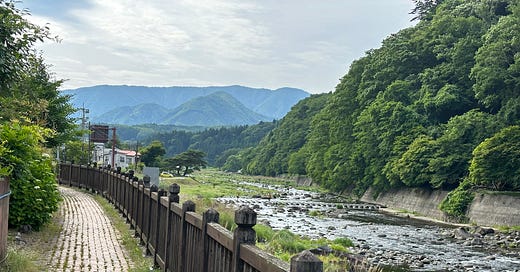



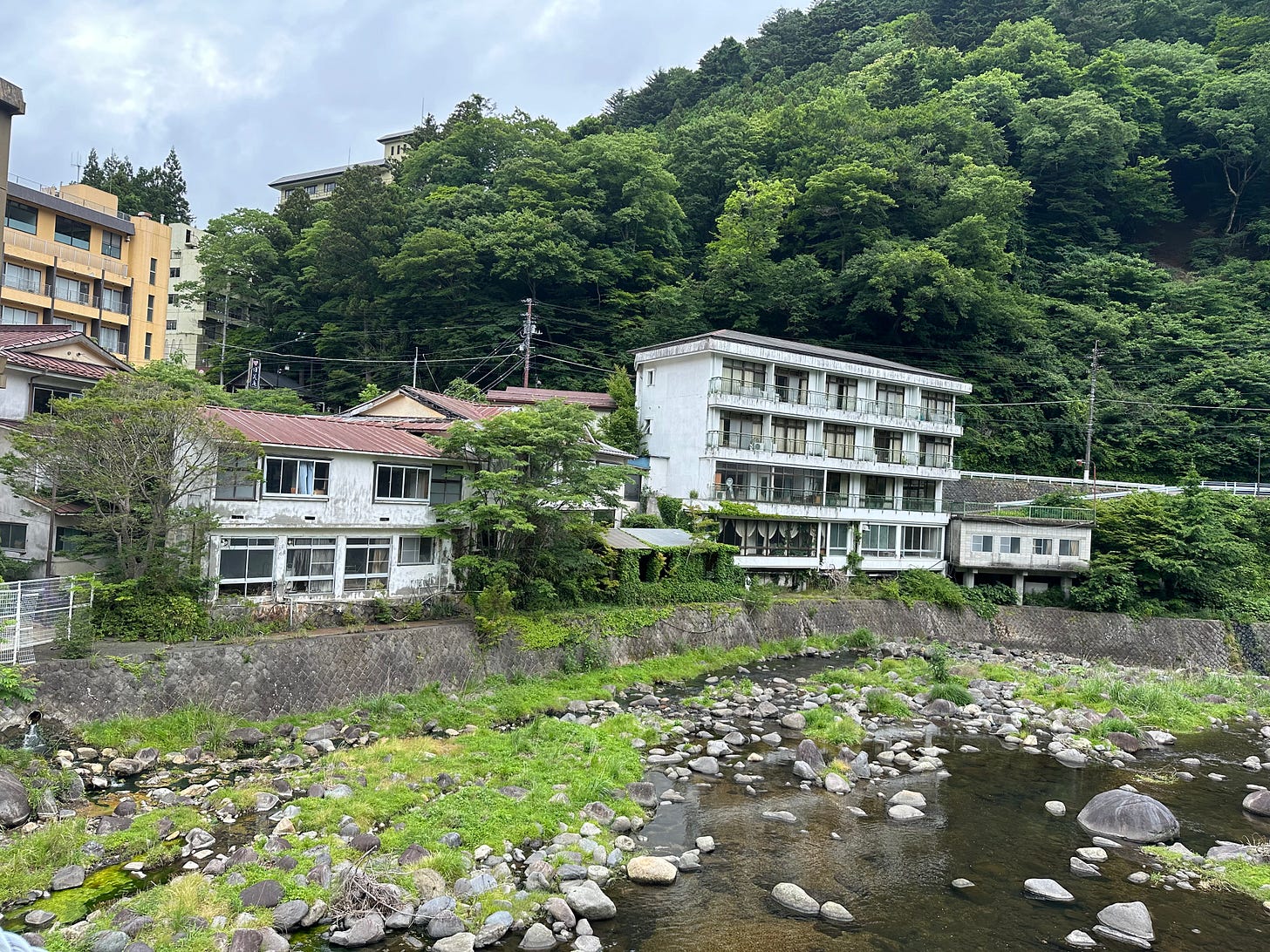
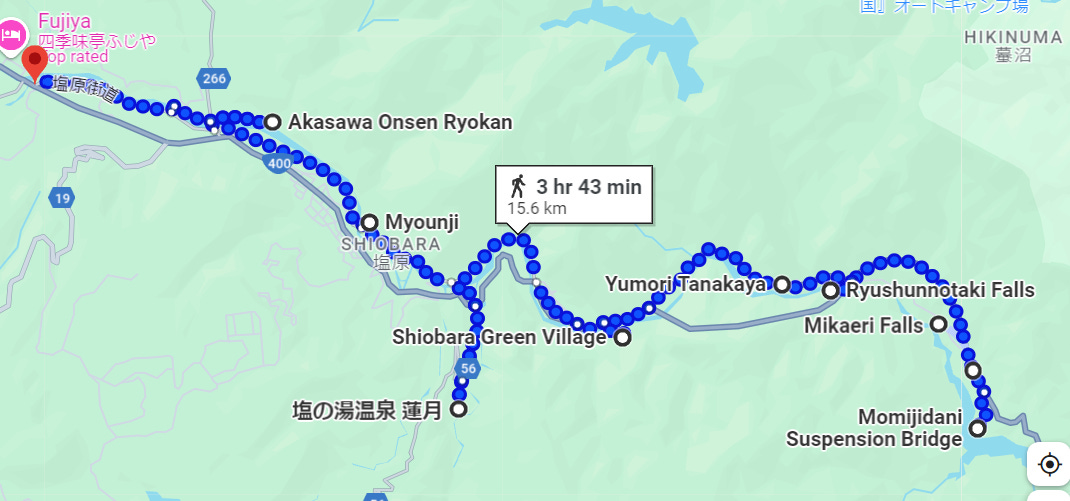
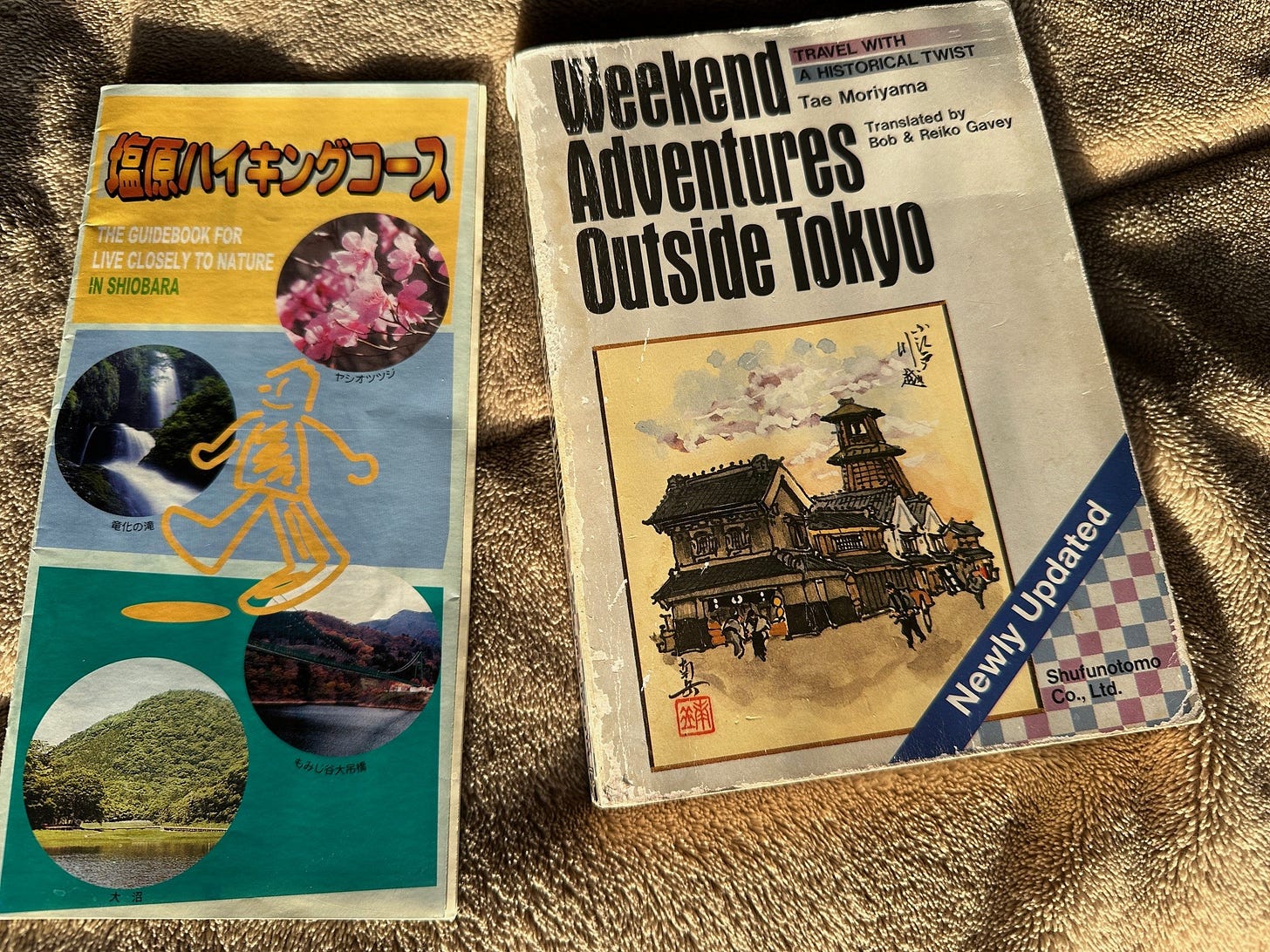
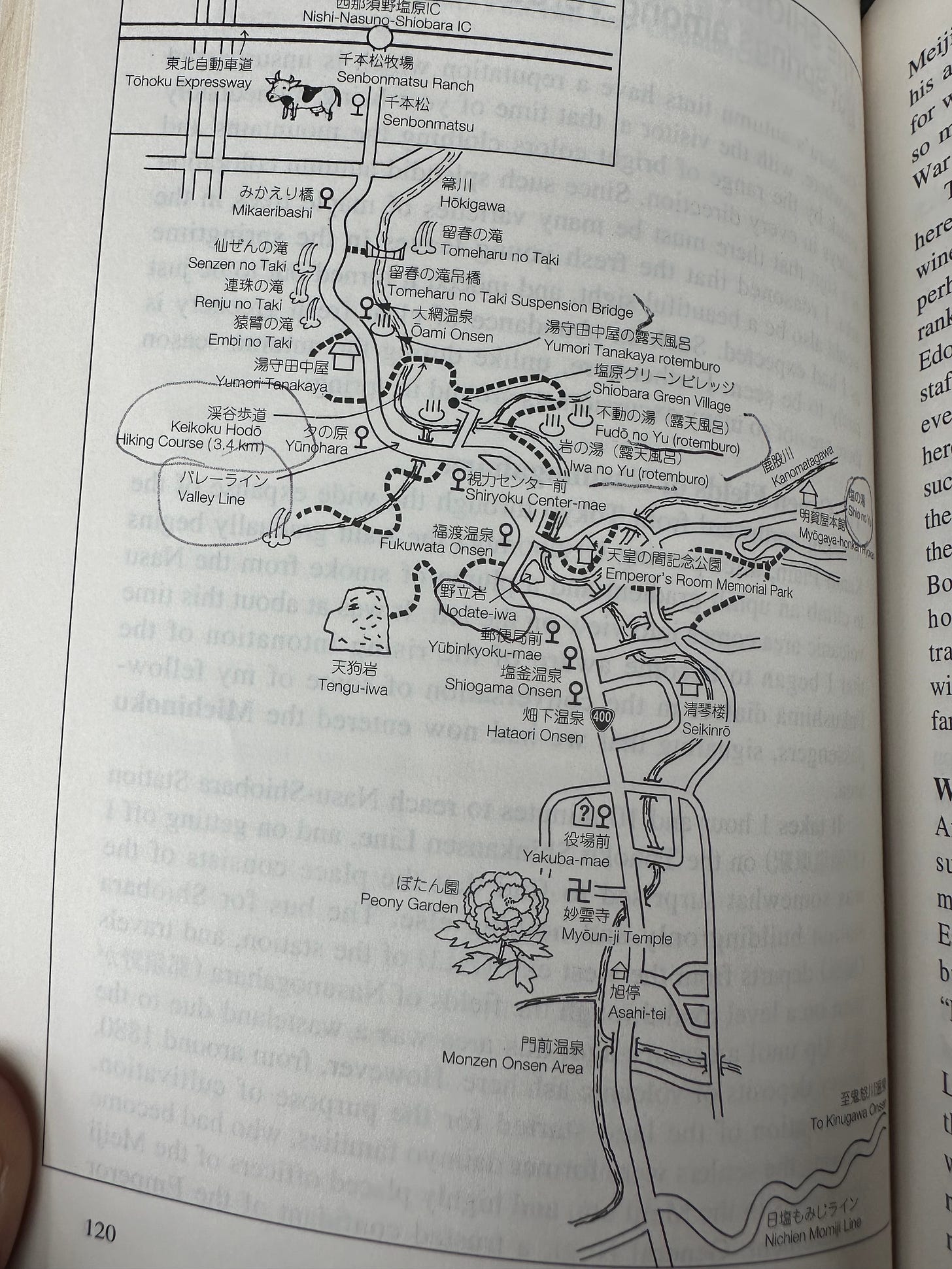


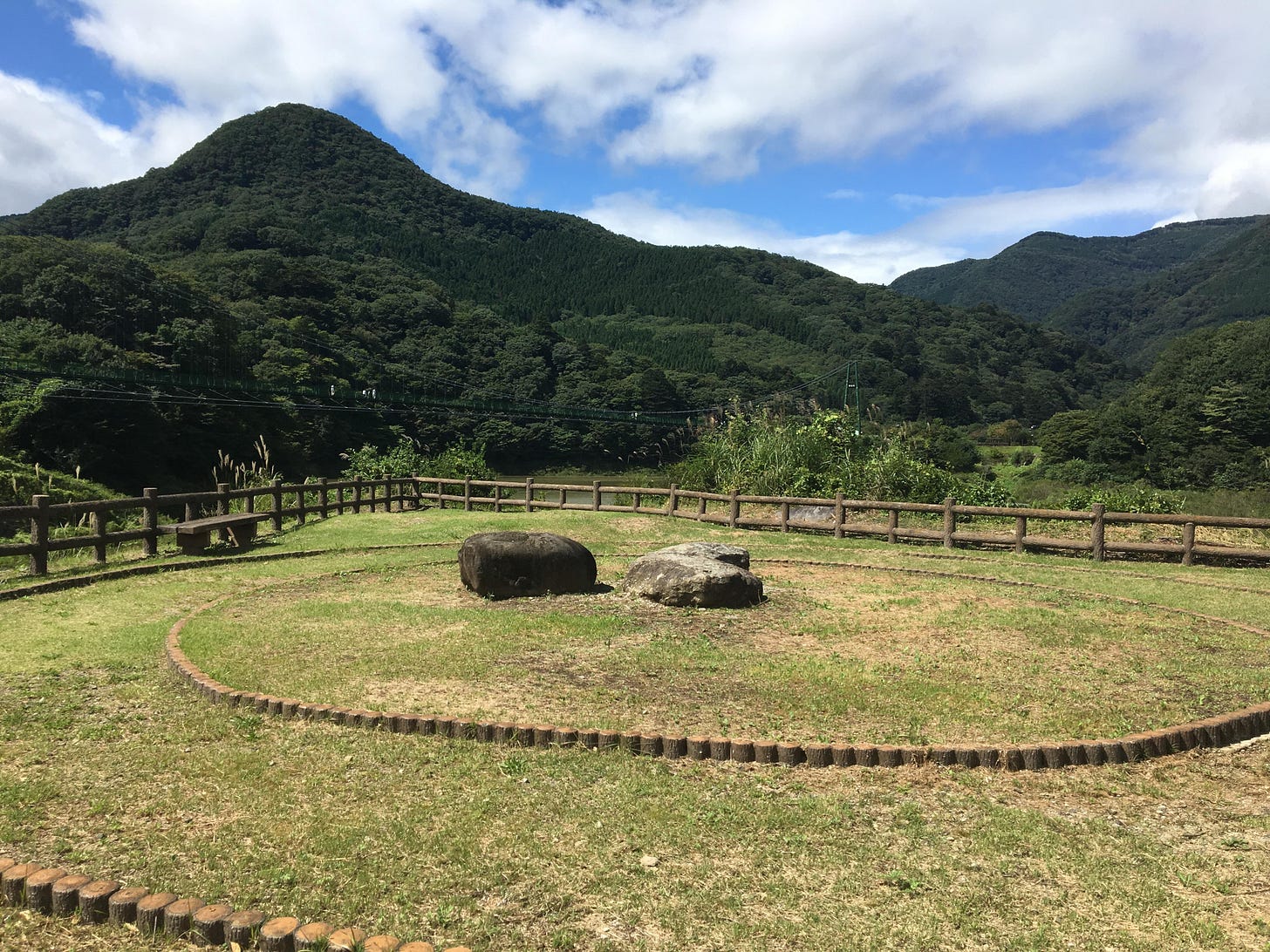
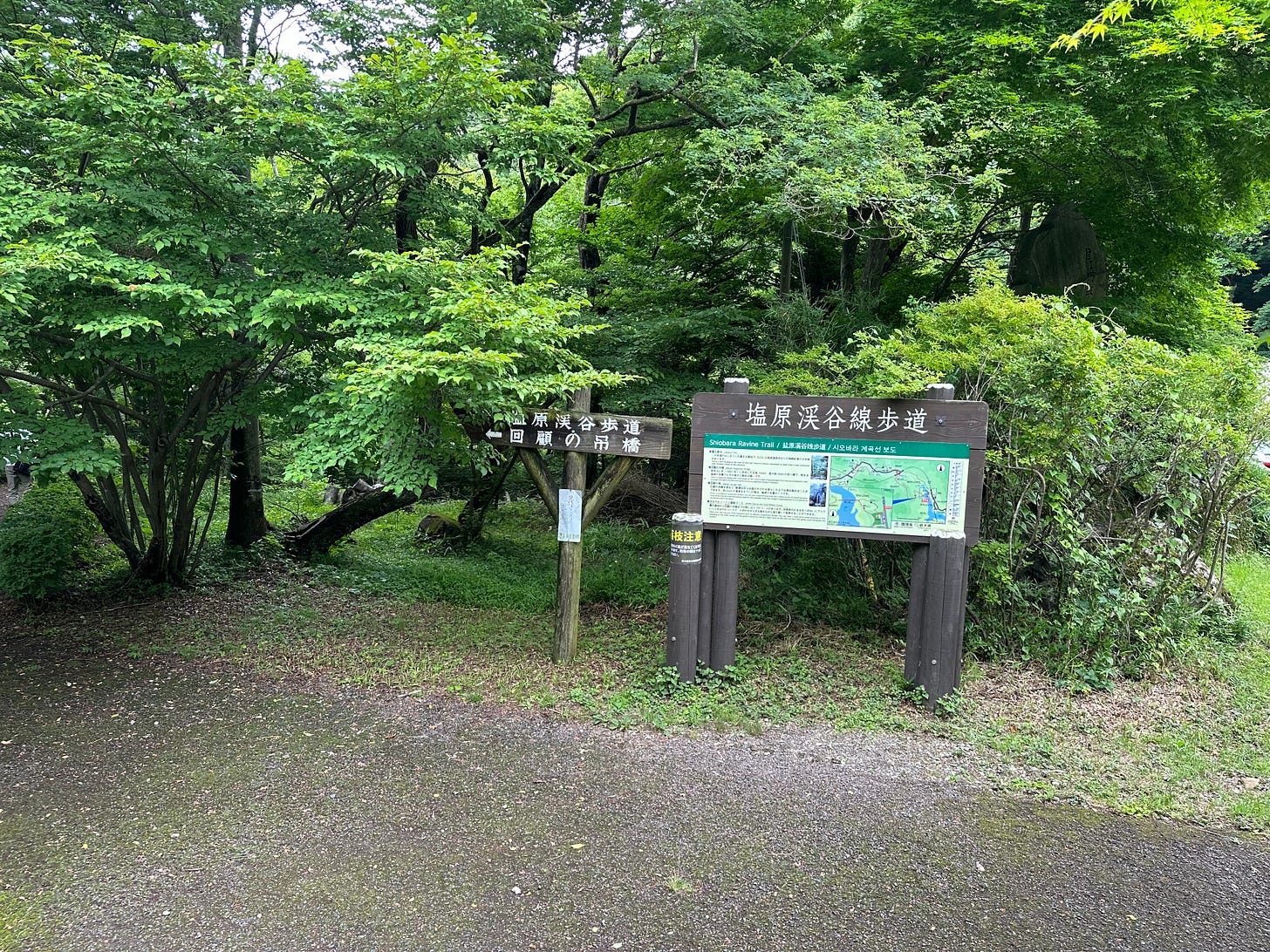

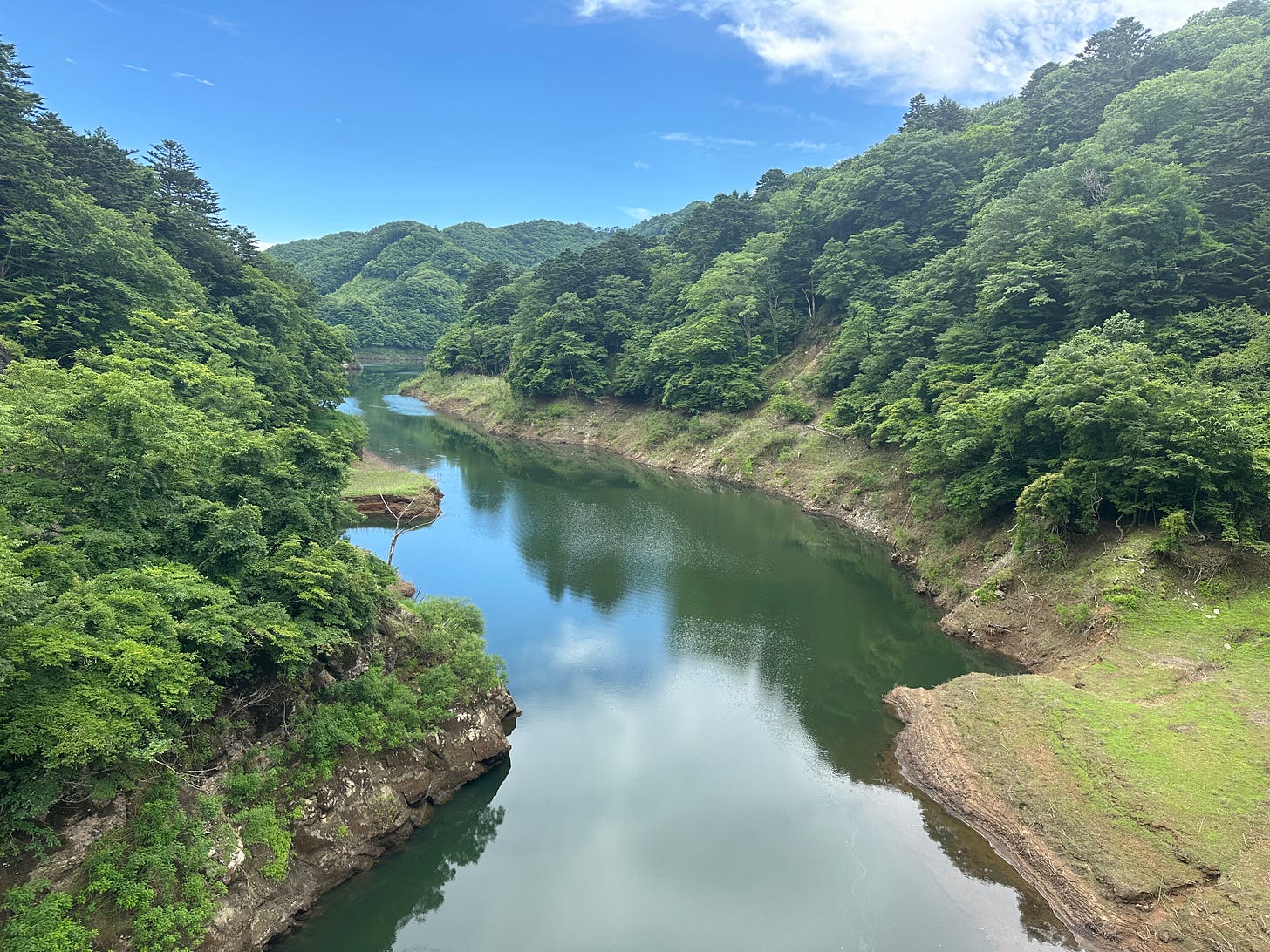
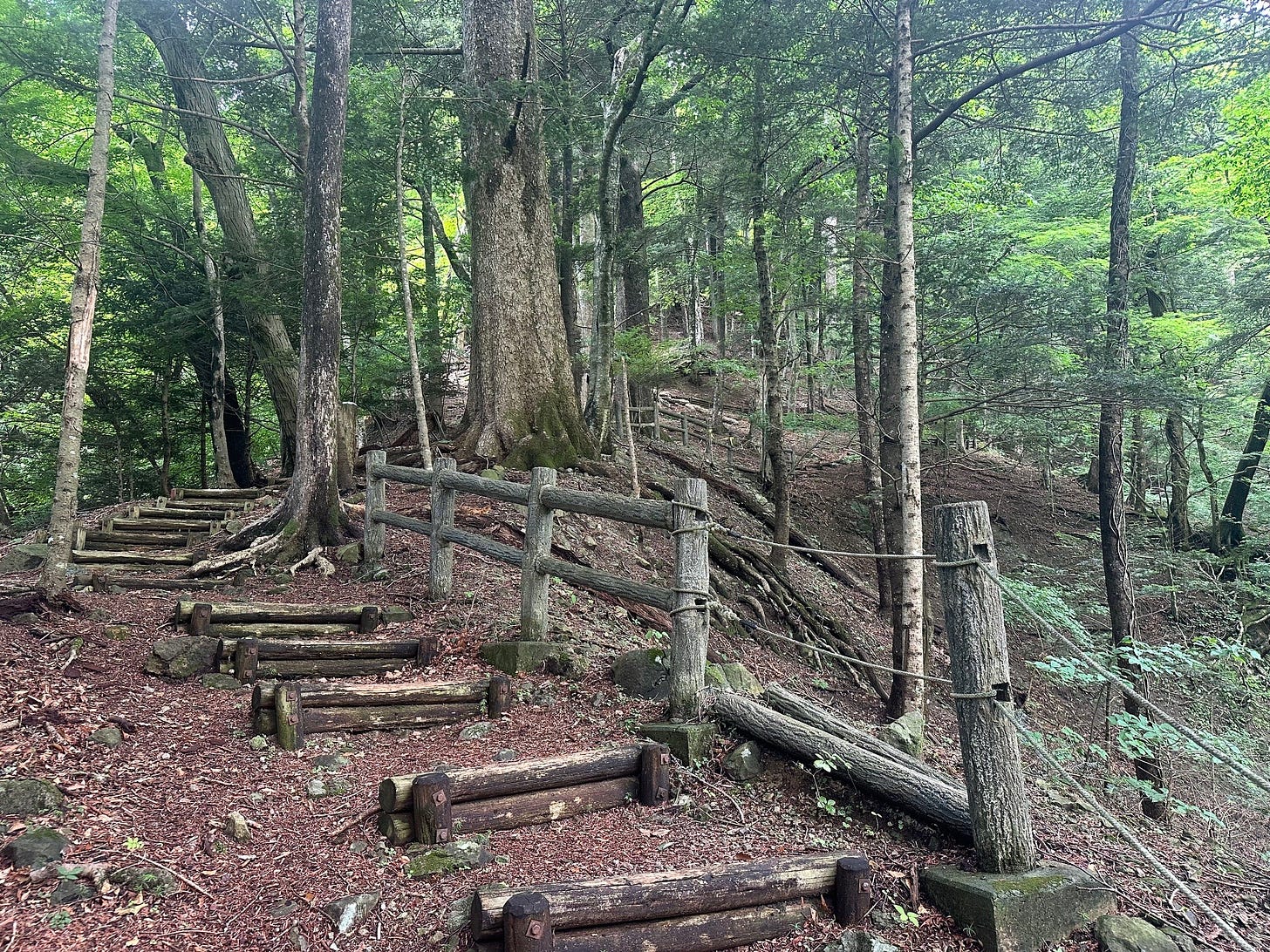
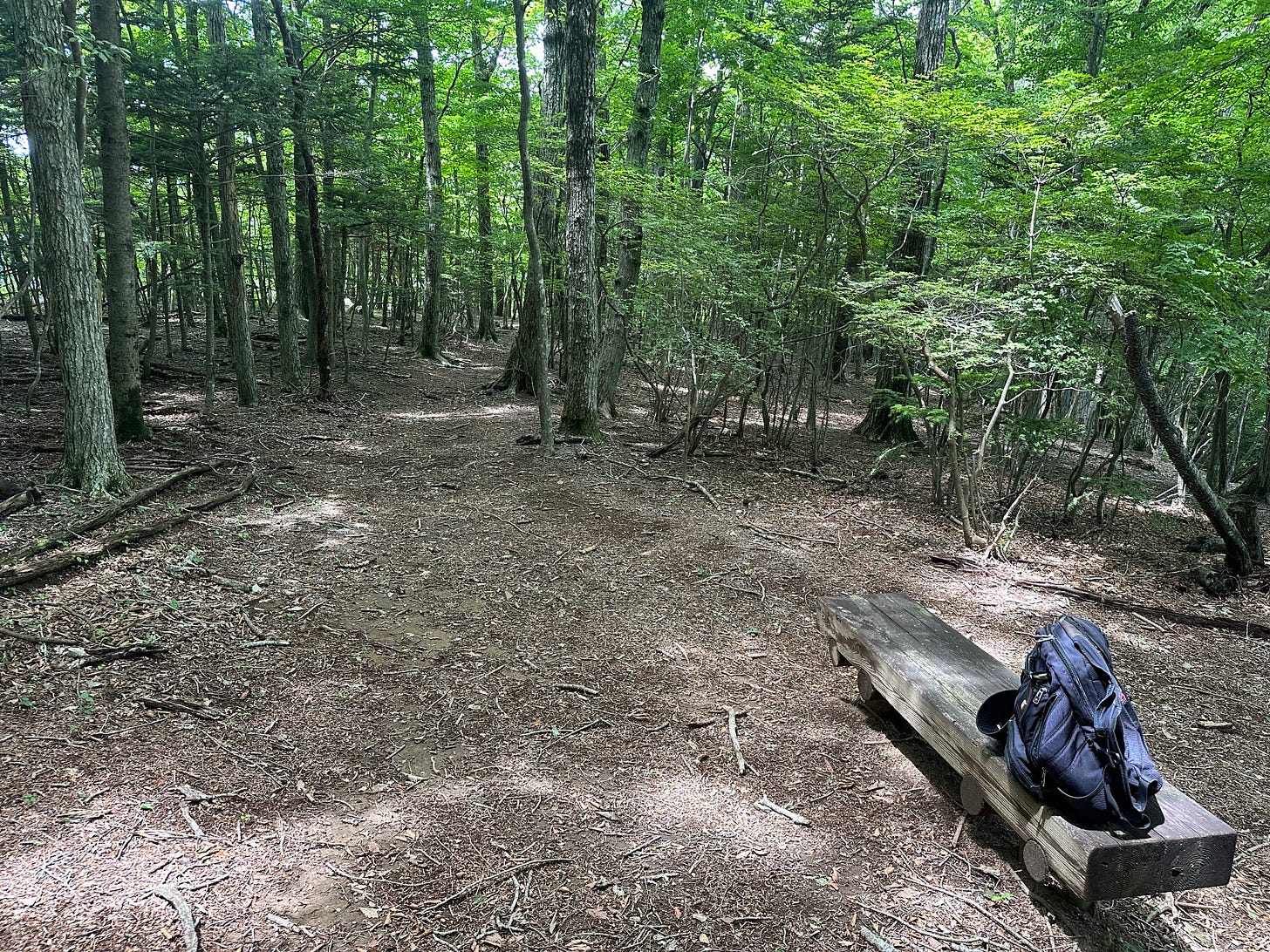
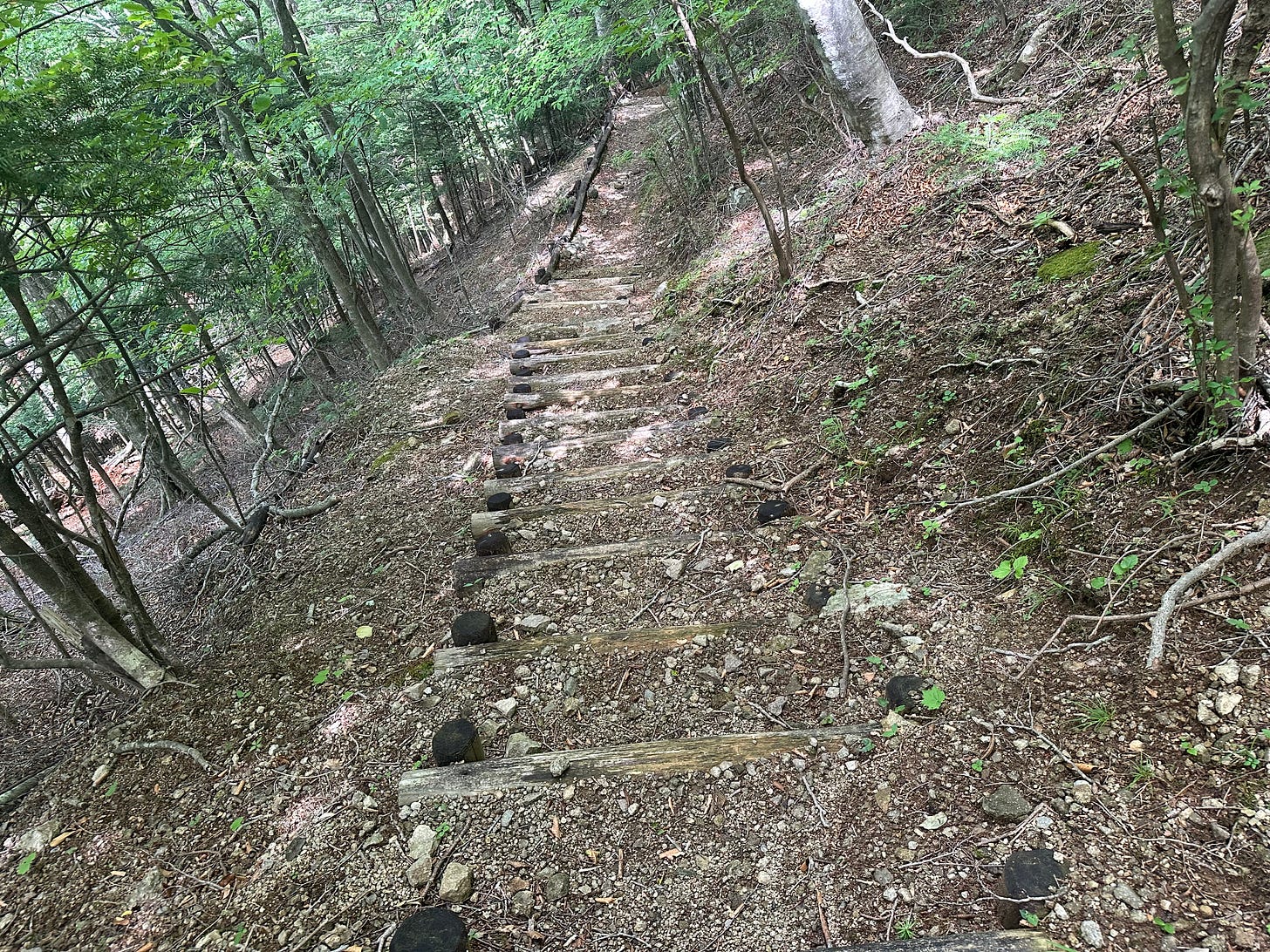
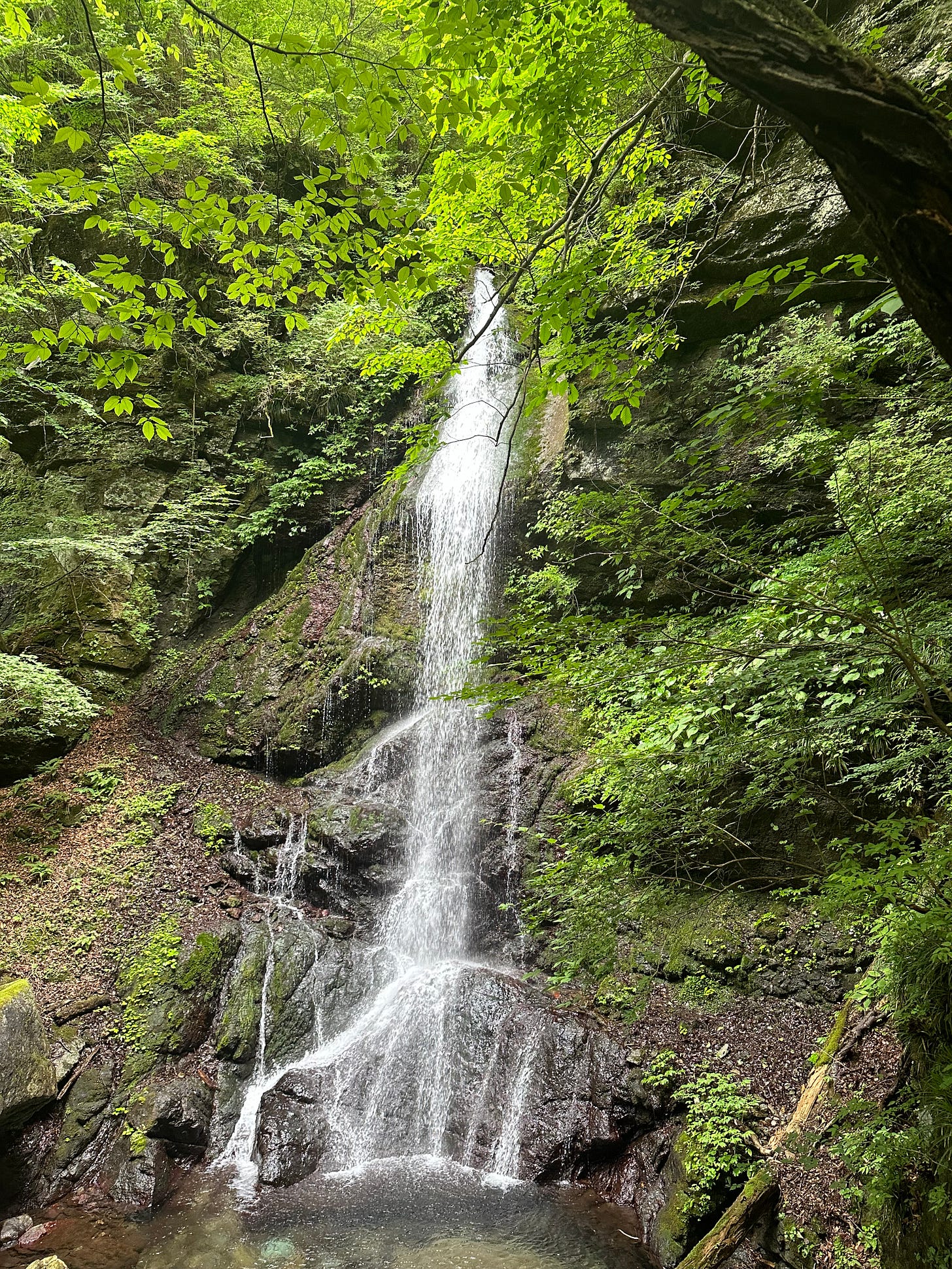
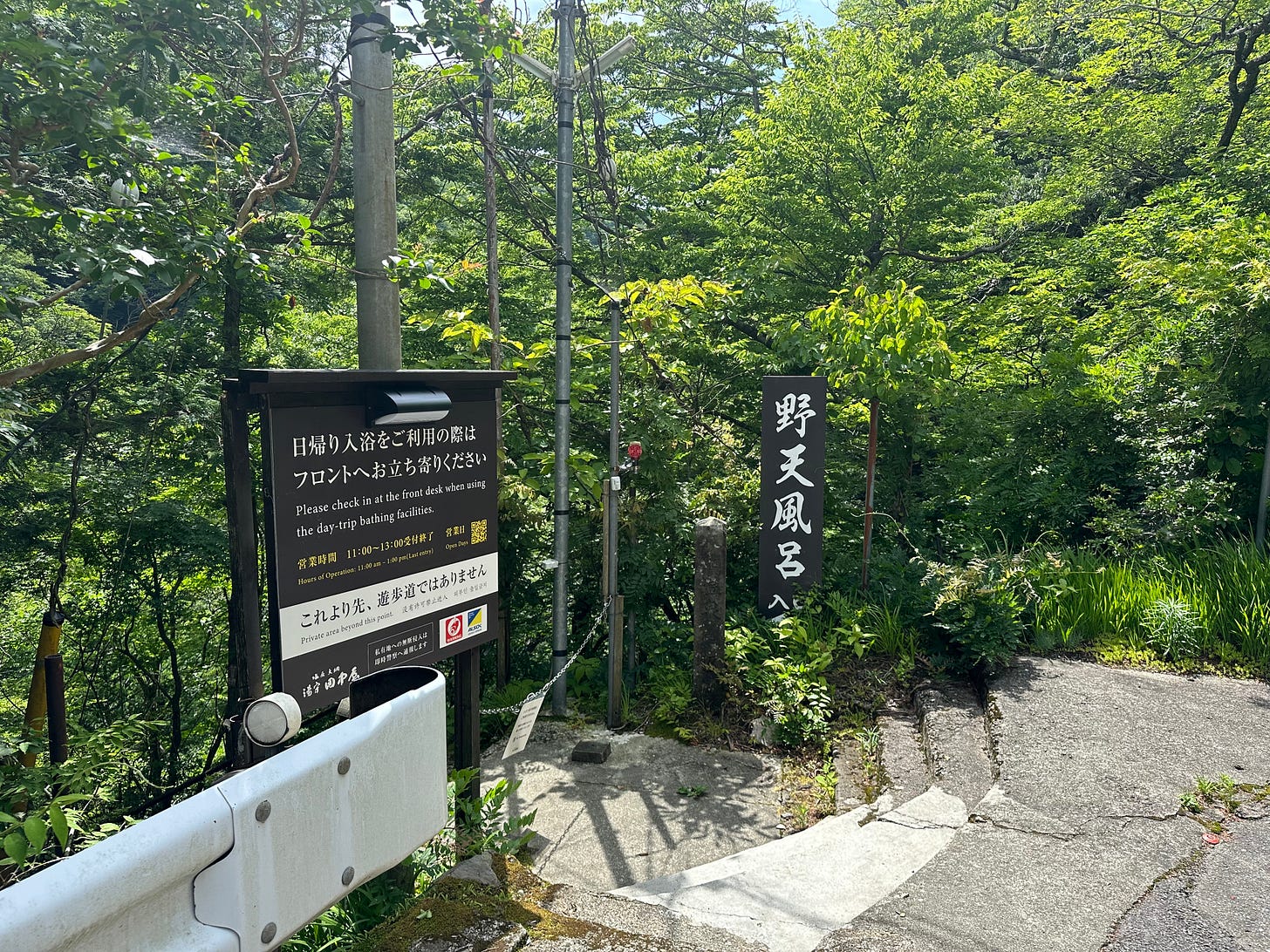
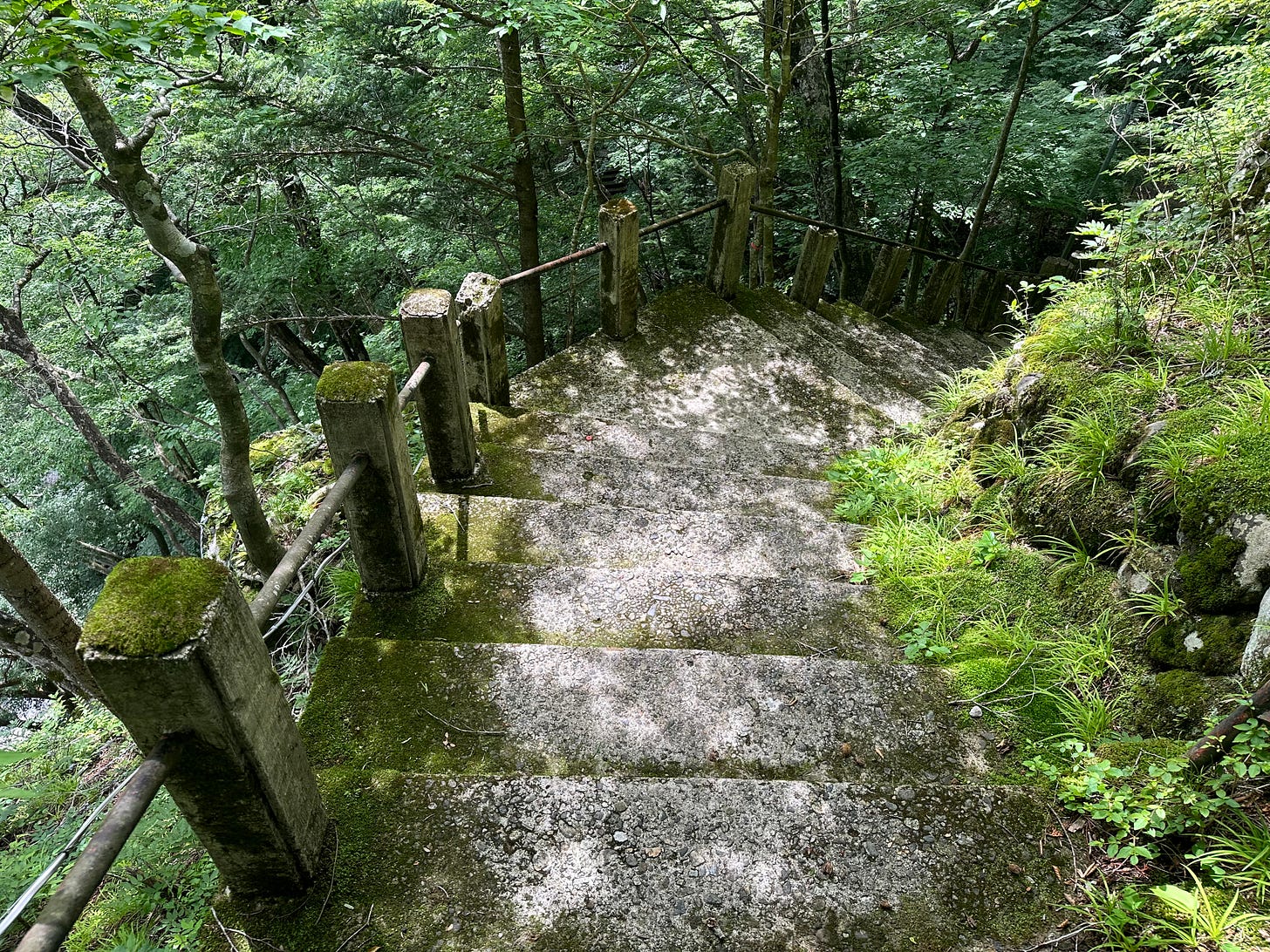
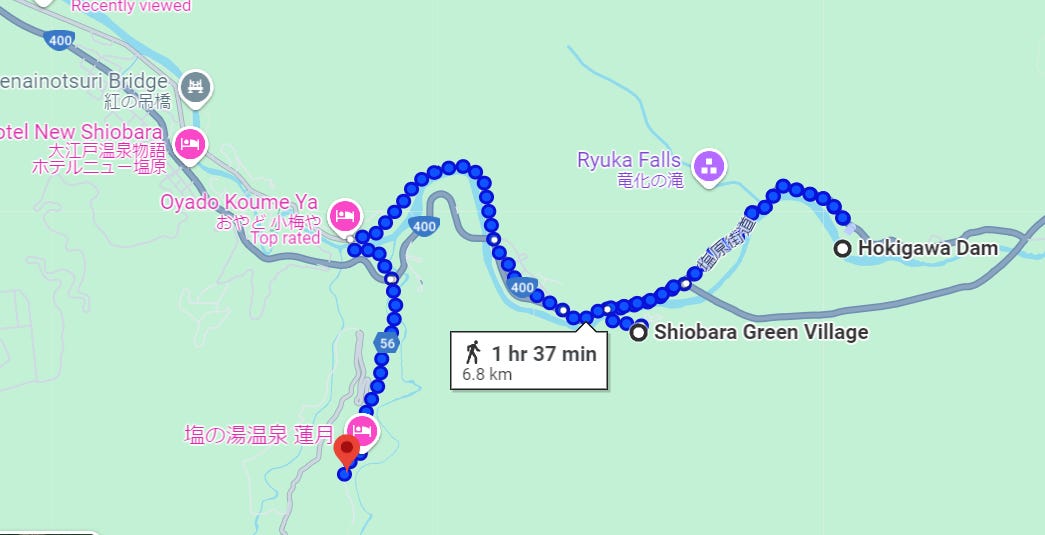
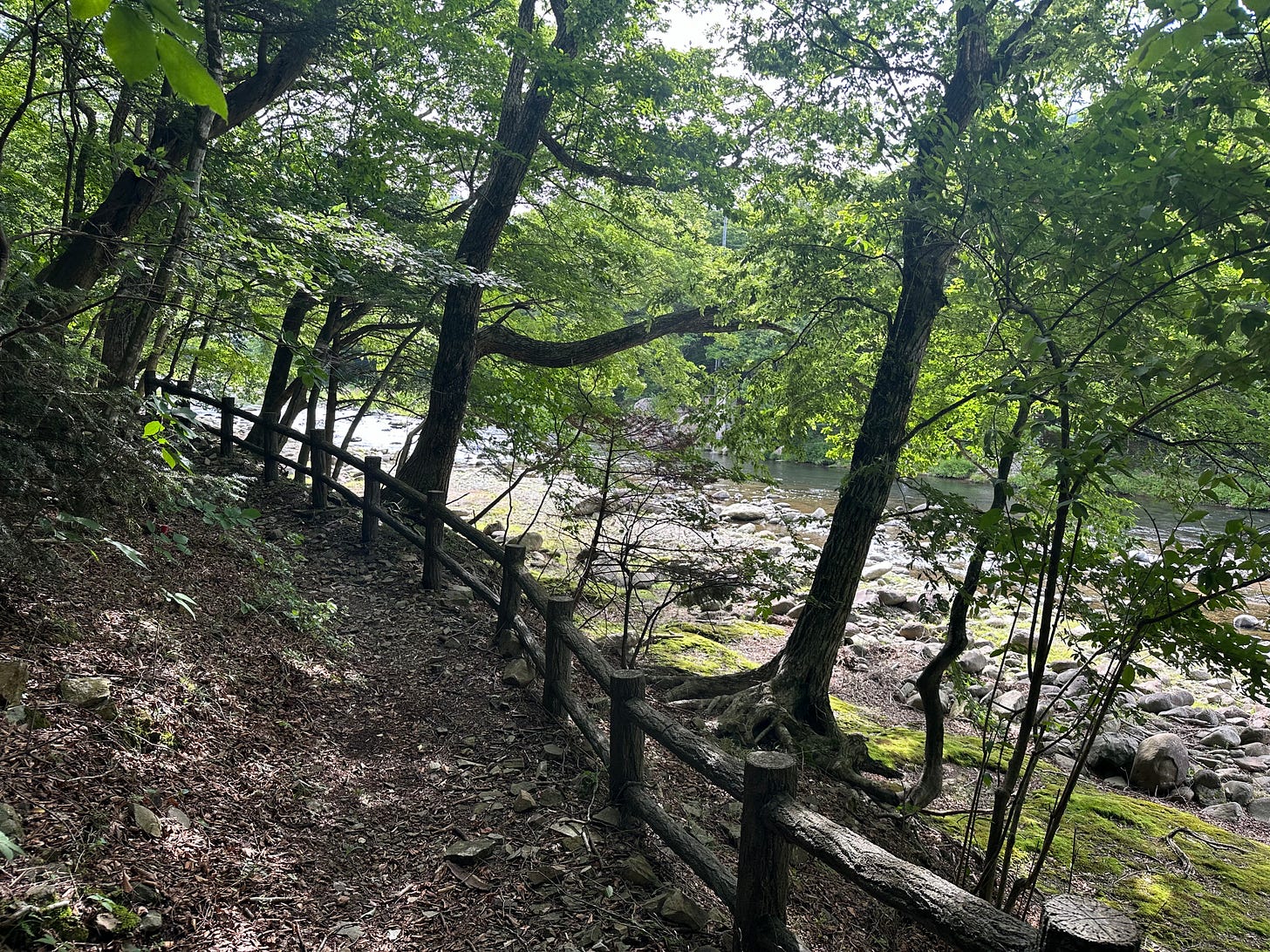
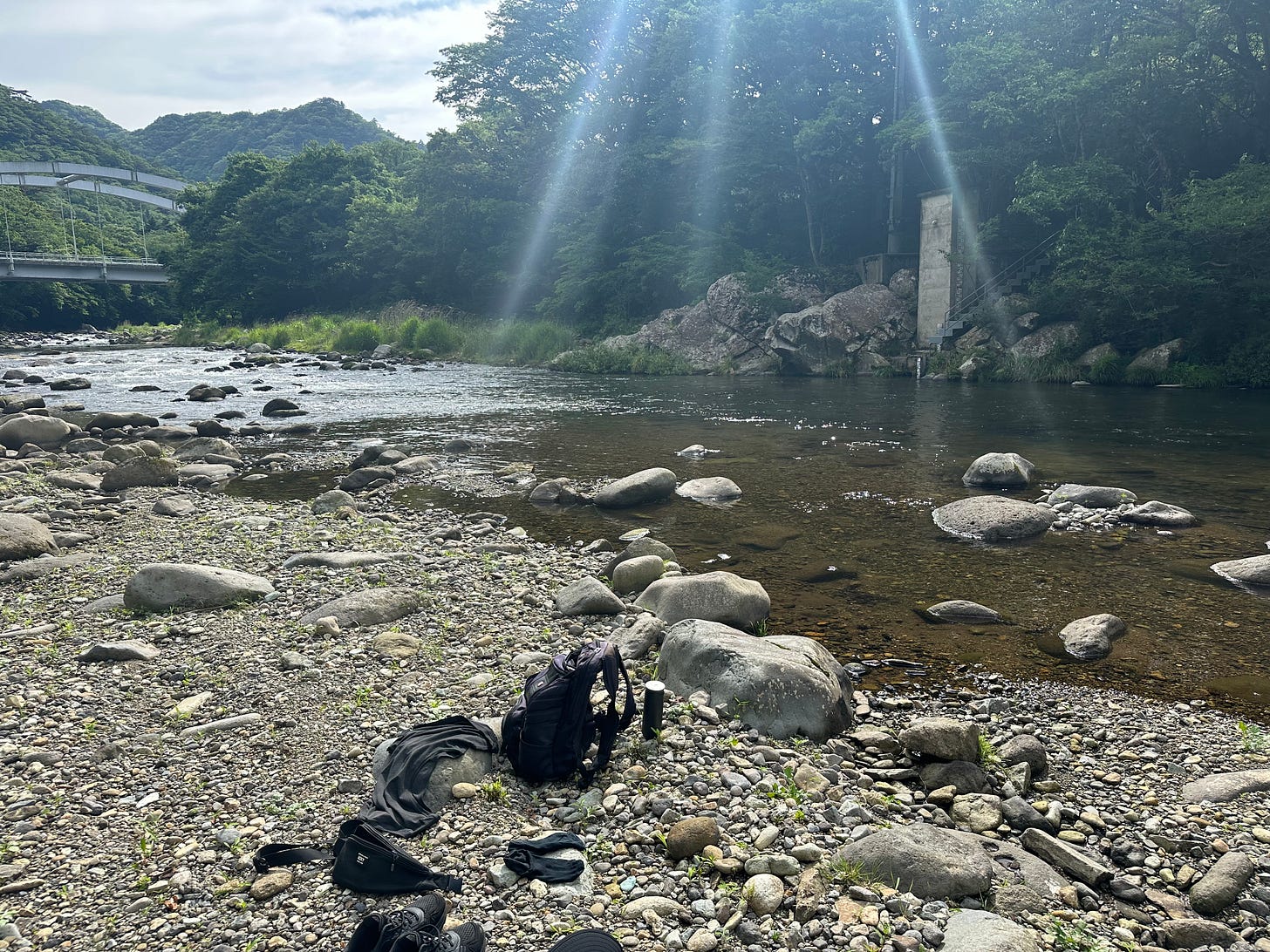
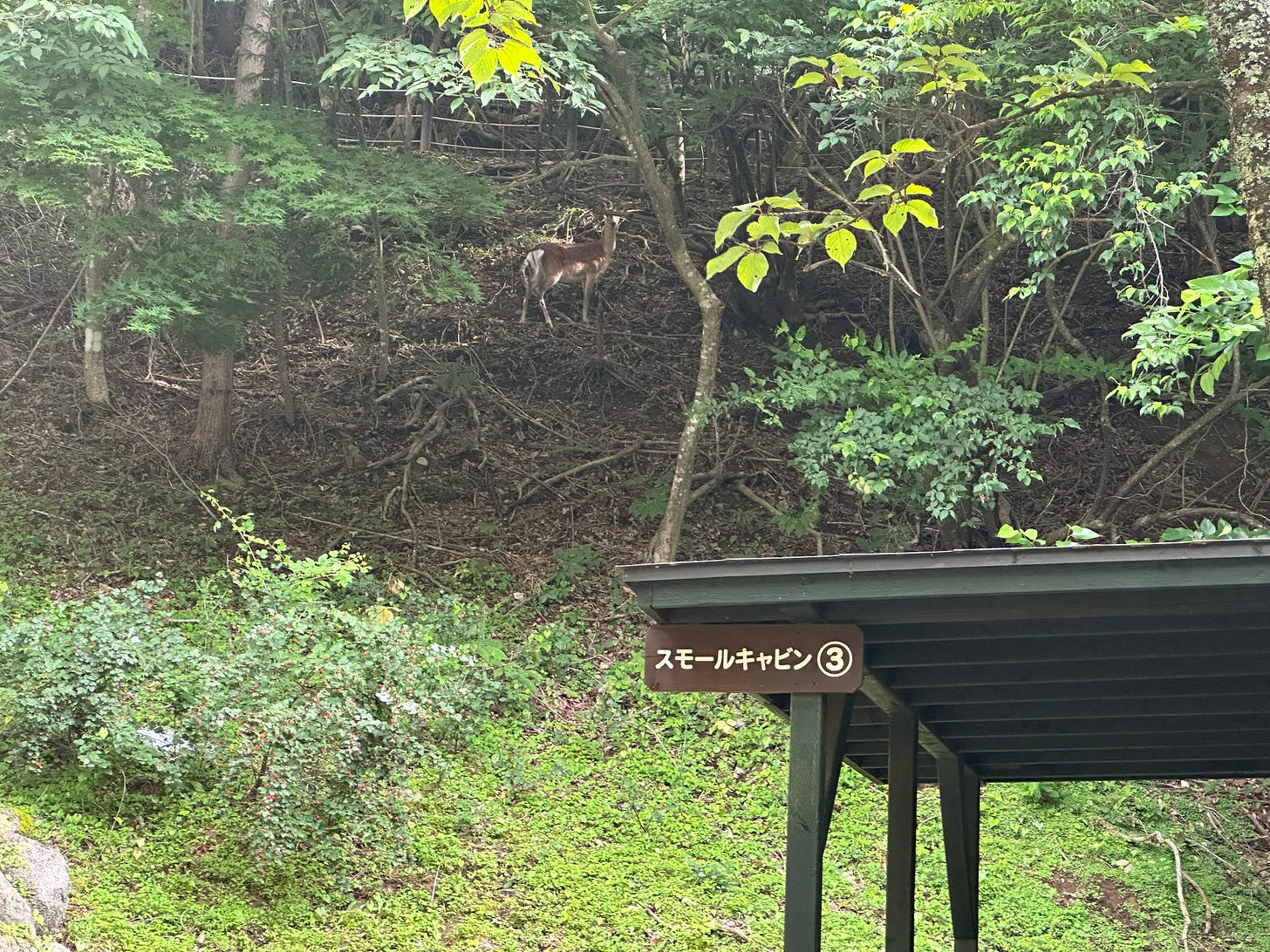
I have that book too. And since I bought it in 1991 it was extremely accurate including the price of bus fares then.
It's interesting how 30+ years have meant changes.
Whatever freedom means, and I believe every human being defines it individually, your hike is certainly liberating!